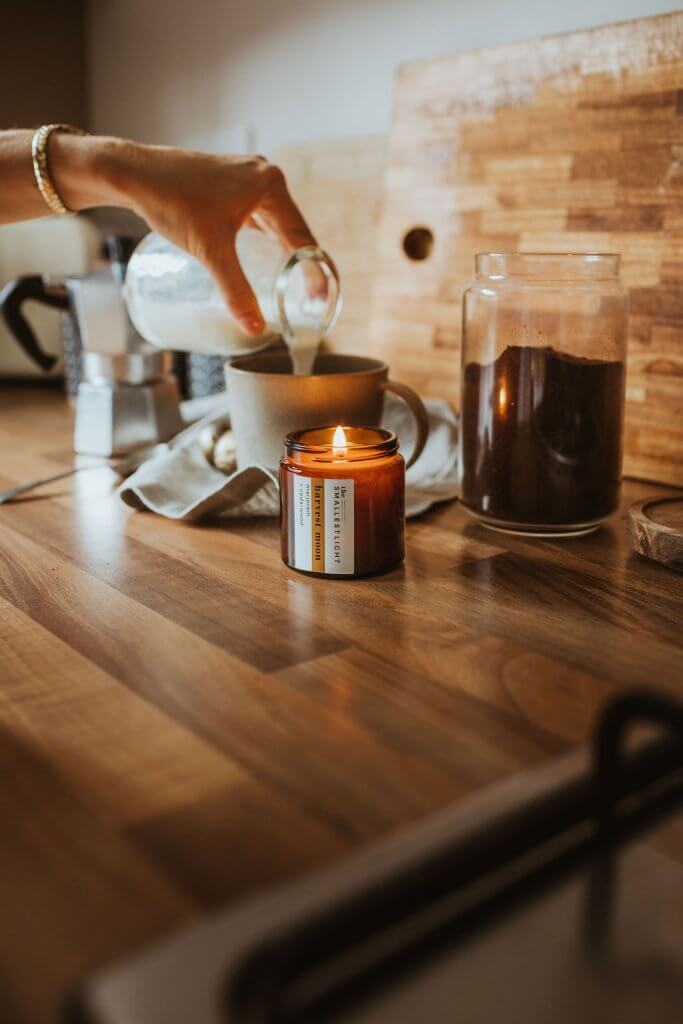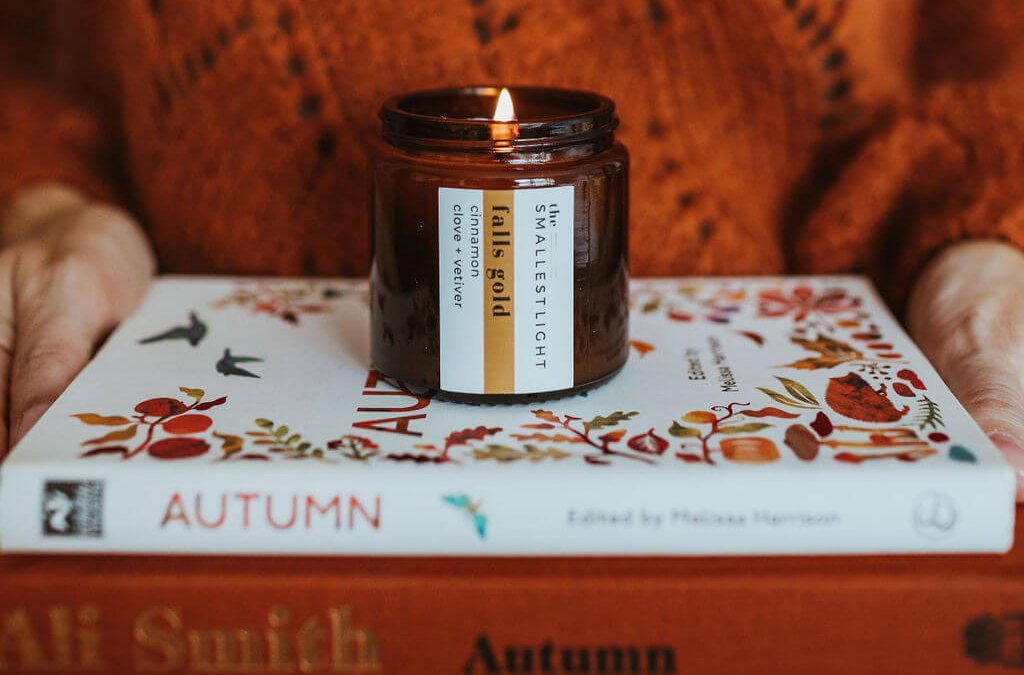The smell of a crackling bonfire has the power to take me back to Autumn nights long past. Echoes of past November evenings spent fumbling to get my fingers into gloves. Painting my glowing name into the freezing air with a sparkler and mastering the art of eating hot dogs without dripping ketchup everywhere! Precious memories, seemingly forgotten, which come rushing back in with every trace of bonfire smoke.
These days I am the one helping my own small people navigate tiny fingers into gloves. I wipe their ketchup faces and rub cold limbs warm, as we huddle close to watch lights dance and explode across the night sky. I wonder to myself if they will remember these feelings of comfort and wonder. Will they secretly store these moments away, kept safe in the deep corners of their memory? I hope so.
The link between scents and memory
When I used to run autumn aroma workshops, I intentionally began each session with a group discussion around our collective memories of autumn. We’d then move on to consider which scents are naturally connected with the season. It is always so fascinating to see just how closely these two separate points of association are fused together in our minds.
Memories of childhood autumn play, kicking up piles of fallen leaves, are inseparable from the earthy, arboreal scent the leaves carry. Recollections of Guy Fawkes Night, warming up beside a crackling bonfire, are woven thick with the smell of acrid smoke.
In fact, so many of the autumnal pastimes that are often recalled in my workshops – pumpkin carving, woodland walks, roasting chestnuts, apple picking, baking pies and crumbles – are experiences which have scents connected with them.
These snapshots from our past are so often entwined with aromas which trigger our brains to recall memories and bring back emotions.
This close connection between memory and scent is explained by the anatomy of the brain. Each scent we come into contact with is processed by the olfactory bulb which contains several types of nerve cells involved in the sense of smell. The nerve cells pass through the olfactory tracts, taking a direct route to the limbic system, including the amygdala and the hippocampus – areas of the brain which are related to emotion and memory.
The amazing capacity we have for aromas to trigger memory is incredibly powerful and can be utilised for our own wellbeing. If we look at ways to harness our natural, emotional attachments to scents, we can use them to create positive feelings of warmth and ambience in our own homes.
Choosing autumn essential oils and natural scents for your home
So let’s look at some simple ways you can incorporate and use natural scents in your living spaces. Do you have a certain aroma you love to smell in autumn? If not, try a few seasonal essential oils out at home and see how they make you feel.
The spiced notes of Cinnamon and the earthy scent of Juniper berry are two of my favourites. I also love to blend these oils with Cedarwood and Bergamot.
Cinnamon Essential Oil – helps us to relax, manage stressful feelings and enhances mood
Juniper berry Essential Oil – has a calming effect on the brain, helping fight the effects of anxiety
Cedarwood Essential Oil – promotes emotional balance and helps stabilise emotions
Bergamot Essential Oil – the oil of self-love, self-acceptance, and self-approval
One small note of caution, remember to use essential oils with care, taking time to read and follow the individual safety precautions for each one. Keep in mind that we each have very unique preferences when it comes to our sense of smell, so it is always worth being considerate of everyone living in your home and their tastes as well!

In terms of natural, safe options for scenting your home there are a number of simple methods you can choose from. Here are a few of my favourites:
Natural room sprays – these are relatively simple to make at home with a selection of essential oils, alcohol and filtered water, mixed and kept in a bottle with a spray nozzle. If you do choose to purchase one, always check the ingredients and aim to find a brand that uses good quality essential oils.
Natural candles – my method of choice! Look for brands that use natural vegetable wax or beeswax. A soy candle holds and throws the scent of essential oils very effectively. The wax heats slowly and will release the aroma at a slow pace, creating an ambient atmosphere in the room. Consider what substances are used to fragrance the wax. Candles made with pure essential oils can be more expensive than synthetically fragranced brands, however they also offer the benefit of naturally therapeutic effects.
Essential oil electric diffusers – there are some excellent quality diffusers around at the moment across a wide price range. Diffusers not only effectively deliver scent but many of the electric options have a beautiful ambient light effect too. You can then choose from a variety of essential oils daily, depending on your mood.
Naturally scented reed diffusers – these have the advantage of being long lasting as the oil is absorbed slowly through natural reeds, which gradually release the aroma into the room.
Natural Wax Melts – a beautifully simple alternative to candles, natural wax melts infused with essential oils are a perfect way to add scent to your home. Choose a favourite oil burner and add your wax melts to the dish for a gentle, long lasting aroma.
It can seem like such a small act – to light a candle, or spray a scented room mist, but aromatic touchstones such as these really are hidden gems.
The secret powers of scent can provide such a wonderfully simple support system for our emotional health, encouraging comforting rhythms throughout the year, in our homes and in our lives.


